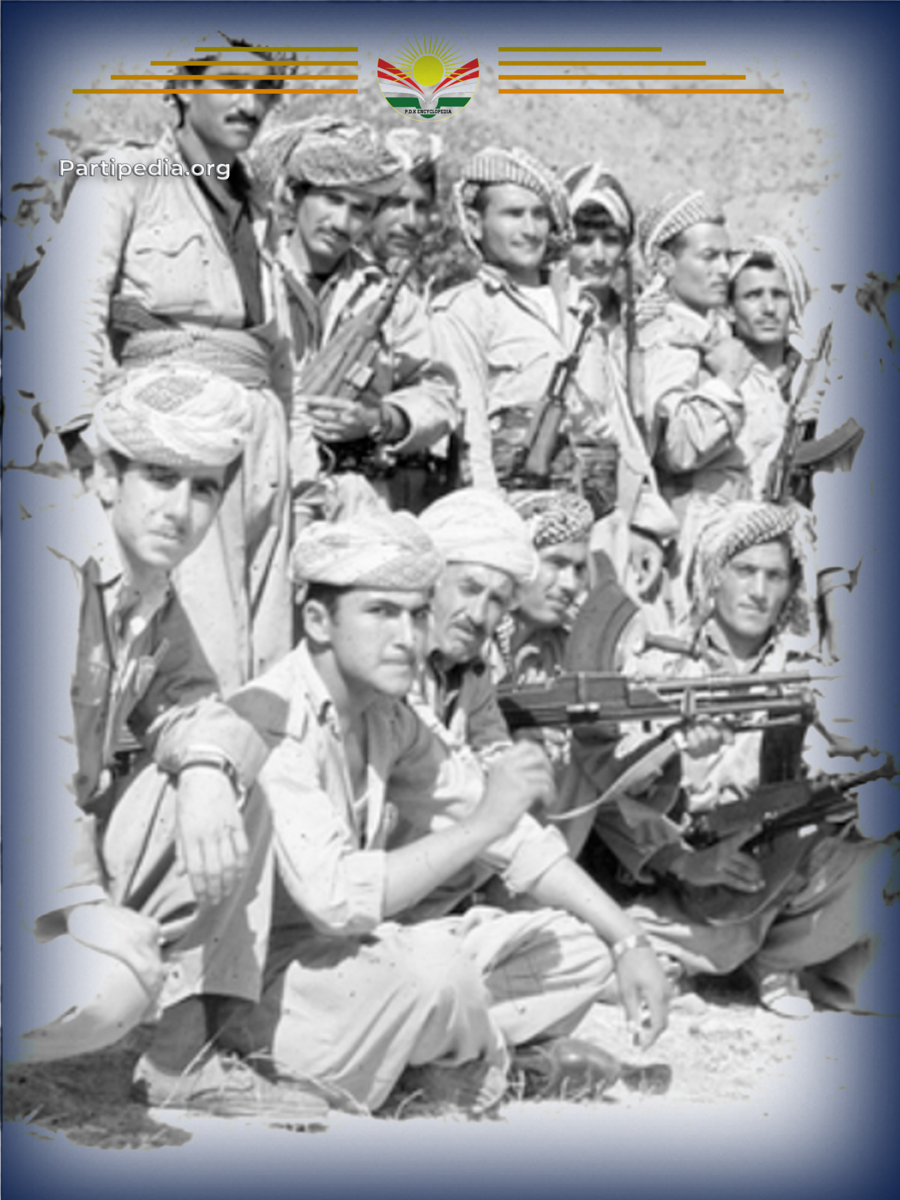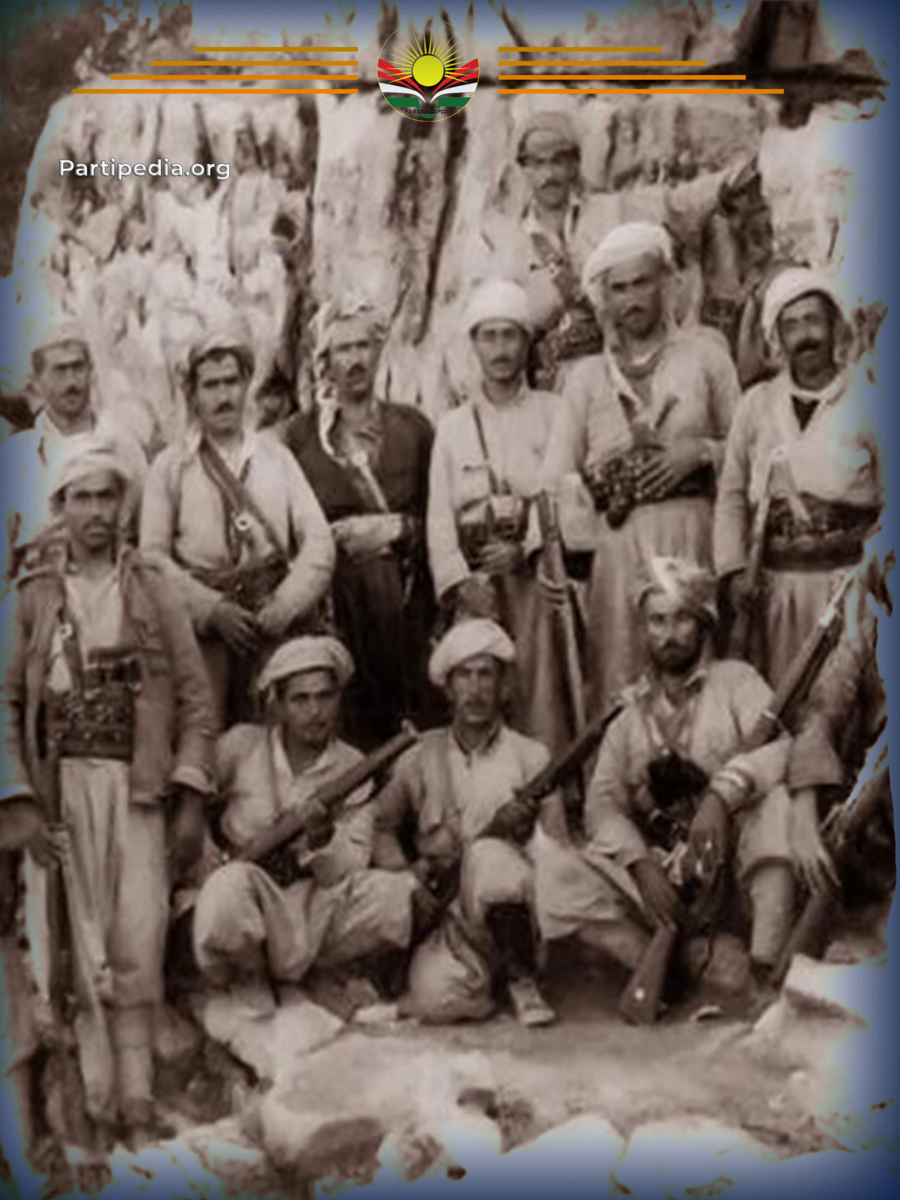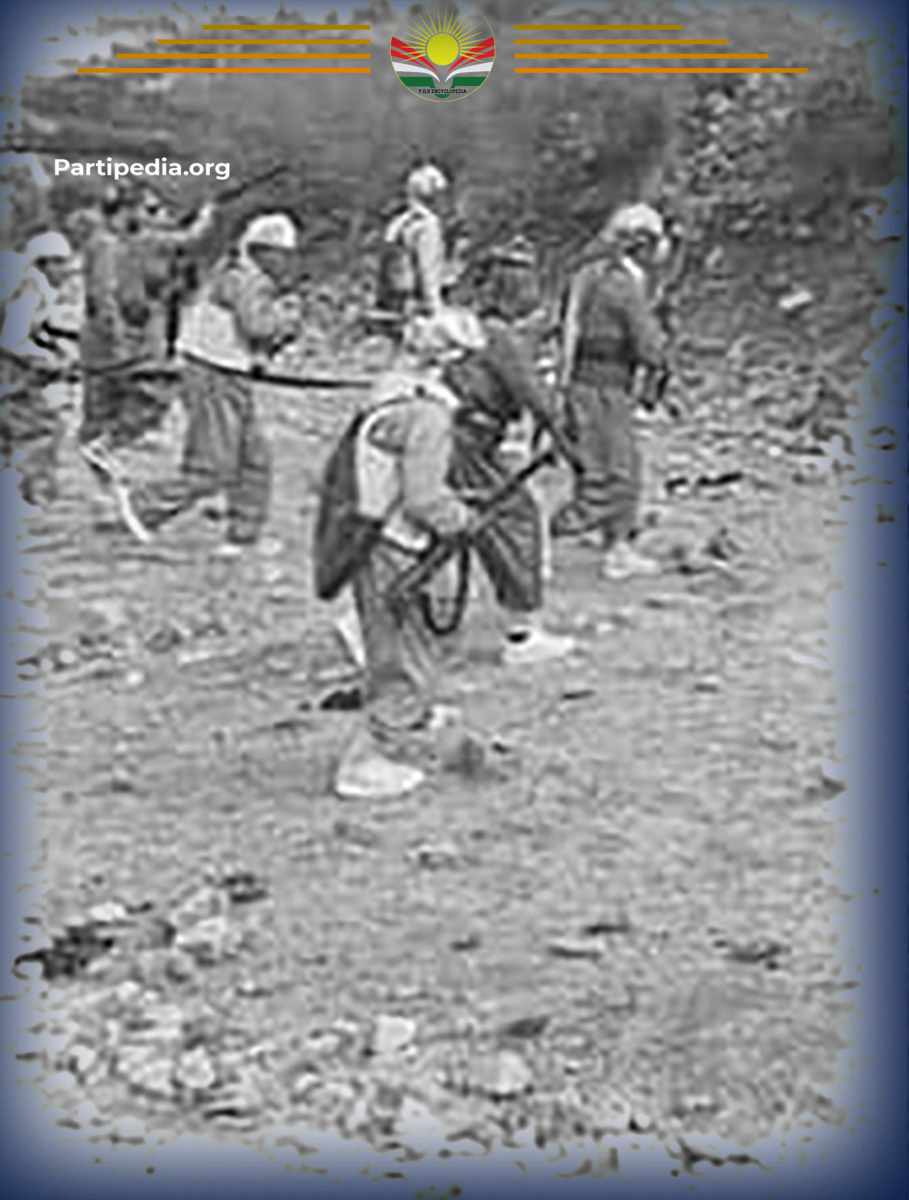The Peshmerga forces faced a significant challenge on January 5, 1987, when the Iraqi army and mercenary forces (jash) launched a large-scale assault in the Atrosh and Sheikhan areas, along with the surrounding regions. Backed by tanks, armored vehicles, artillery, and warplanes, the attackers engaged in a fierce battle that lasted for a duration of 13 to 15 days. Despite the government forces managing to capture certain territories, the Peshmerga forces, supported by the local civil forces, demonstrated remarkable resilience and ultimately emerged victorious.
Atrosh stands as the most ancient district in Kurdistan, situated within the Badinan region of Sheikhan district. The population mainly consists of Muslim Kurds, with Christians and Yazidis also residing in the area. Similar to various other regions in Kurdistan, Atrosh village has endured multiple instances of destruction at the hands of the Ba'ath regime due to the unwavering support of the local populace for the revolution and resistance. Consequently, the government initiated military operations to diminish the influence of the Kurdish revolution and reinstate state authority.
A significant offensive took place in the region, led by the Iraqi army on January 4, 1987. They deployed a large force and began by blocking the roads to Sarsang and Bamerni. Additionally, they brought in reinforcements to Deraluk and Sheikhan. Simultaneously, the revolutionary leadership received reports from the committees in Sheikhan and Akre via telegraph messages about military movements in Bakirman, Atrosh, Kore Gavana, Bagera, and Suwaratuka. On January 5, 1987, the Iraqi army, supported by mercenaries known as "jash," launched an attack on the Peshmerga positions in the Sheikhan after 12 AM. Another group of mercenaries from the Soran region joined the fighting. All the forces gathered in the village of Qerki Sheikh Hadi, where they established artillery positions and divided themselves into four districts:
-
Atrosh district to Kanika Castle to the top of Birokyat. The Peshmerga forces and the Civil Forces of the villages of Kanika, Birokyat, Shakewte, Kani Mazi and Bebadi confronted them.
-
Districts of Nasra to Hasnka. They were repelled by the Peshmerga forces and the Civil Forces in the villages of Nasra and Hasnka.
-
Barash Siyar and Spindara districts. They fought alongside two organizations of the Peshmerga and Civil Forces of Siyar and Spindar, and the surrounding villages. Due to the disbandment of all battalions and forces during that phase of the revolution, the Peshmerga forces were restructured based on party organization within the region.
-
In Bakirman district and along the Rbatke Sedra River, the Peshmerga forces under the command of Tamar Kochar and the Civil Forces fought against the enemy. Throughout the night, intense battles raged across all four districts, and the government forces were unable to make any progress. As morning broke, the Iraqi army-initiated shelling and airstrikes on the areas of Barwari and Mazuri. Fearing for their safety, women and children sought refuge in caves, valleys, and the parts of Mount Gara during the harsh winter. Meanwhile, those capable of fighting took up arms and headed to the frontlines.
According to the telegraph message sent by the Peshmerga forces in the Shaikhan area to the revolutionary leadership, on January 6, 1987, the government launched three unsuccessful attacks on Kanika Castle on the Atrosh front. Subsequently, aided by mercenaries (jash) and commando forces, they managed to infiltrate Kanika Castle and martyr a Peshmerga member of the Communist Party. And the government forces took possession of the fallen Peshmerga's body. Moreover, later that evening, government troops advanced to Hasnaka, where several (Jash) leaders and advisors were involved in the conflict, and over 20 air strikes were conducted by helicopters during the battle. However, despite significant casualties suffered by the government forces, the Peshmerga incurred losses of two martyrs, one missing member, and one wounded individual. Simultaneously, the government made progress from the Bakrman district to Ware Merge.
Despite the frigid temperature, intense combat persisted on the Sheikhan front on January 7th. The army and government forces launched attacks from the Atrosh district towards Kanika castle, Bewze, and Hasinaka areas in the direction of Sheikhan. Nevertheless, the Peshmerga forces of Sheikhan displayed remarkable resistance and successfully repelled the government offensives. Additionally, Branch 1 led by Sayed Salih and a force from the Duhok region commanded by Sa’dun Korki and Mohammed Shafiq joined the battle to support the Peshmerga forces of the Gulan Committee.
On January 8, 1987, the conflict persisted in the Sheikhan area. The Peshmerga forces from the Duhok region arrived at the border to provide assistance to the Peshmerga forces in Sheikhan, while the Peshmergas from the Zakho region were in route to offer their support. During this time, the mercenaries withdrew from Ware Merke behind Bakirman and hastily fled, abandoning a significant amount of equipment. In the Spindar front, the Peshmergas from Sheikhan and Duhok launched an assault on the mercenaries, resulting in their defeat. Moreover, numerous enemy combatants were killed, and some of their bodies were seized by the Peshmerga. Additionally, eight mercenaries from Duhok, Sheikhan, and Kani Masi were apprehended by the Peshmerga, and the Peshmerga also managed to seize eight Kalashnikovs and an RBK. Unfortunately, there were casualties on the Peshmerga side, with two Peshmergas from Sheikhan and Zakho being martyred. Furthermore, a member of the Civil Forces, who resided in Hasinka village, went missing.
On January 9, 1987, the government forces suffered a major defeat in the Spindari, Bakirman, and Hasinka districts, with only Kanika castle remaining under their control.
Casualties were reported as follows:
- In the Kanika front, there were forty fatalities, including two sergeants and a Bethel. Additionally, 5 soldiers were captured by the Peshmerga.
- In the Spindar front, 32 soldiers were killed or injured, with four bodies taken by the Peshmerga and eight soldiers taken as prisoners.
- In Hasana, 30 soldiers were reported killed or wounded.
During the night of January 11-12, 1987, the Duhok committee's Peshmergas executed a partisan operation to alleviate the government's relentless attacks on the battlefields. Meanwhile, they displayed immense bravery and heroism in the outskirts of Duhok. And they launched an assault on various government headquarters. Additionally, a helicopter was successfully targeted and brought down in Atrosh. However, on January 14, the intensity of the fighting escalated on the Sheikhan front. Backed by tanks, artillery, and aircraft, the government launched a massive offensive against the Peshmerga forces stationed in Kanika and Spindari fronts. The area was relentlessly bombarded, but despite this, the Peshmerga managed to reclaim some of the territories they had previously held in Sidera, Barane, and Kani Maze. Moreover, the government forces suffered significant casualties during the clashes. Unfortunately, the clash also resulted in one martyr and eleven wounded among the Peshmerga forces, as well as two martyrs from the Civil Force.
On January 15, 1987, the Iraqi army and mercenaries’ attacks neared the headquarters of the Sheikhan Committee. However, they were forced to retreat and be defeated due to the strong defense of the Peshmerga. And during the period of January 13 to 15, 1987, there was a relentless and continuous battle. However, The Peshmerga, along with the Civil Forces, executed a well-coordinated strategy that ultimately led to the defeat of the enemy. But unfortunately, the mercenaries wreaked havoc in several villages, including Bebadi, Karava, and Agosh, where they looted and set fire to the properties.
During the period when the Peshmerga were occupied with defending against and repelling the government forces' relentless attacks, they persisted in carrying out their Peshmerga duties. On January 21, 1987, the Peshmergas from the Martyr Amin Nasri and Martyr Mahmoud Yazidi Organizations in Sheikhan region, along with the Shorsh Organization in Zakho, launched artillery strikes in Sharman and Bakirman using 120mm artillery on the bases of the mercenaries' that were under the command of Arshad Zebari.
After the conflict concluded, the Iraqi military and their mercenaries endured significant losses. Approximately 300 combatants and soldiers were reported to have been killed. Additionally, 12 military vehicles were destroyed, and the Peshmerga gained possession of 30 Kalashnikov rifles and a substantial amount of 120mm ammunition. Unfortunately, the revolution's casualties consisted of 30 martyrs and injured members from both the Peshmerga and the Civil Force.
Sources:
١- مهسعود بارزانی، بارزانی و بزوتنهوهی ڕزگاریخوازی كورد، بهرگی چوارهم، ١٩٧٥-١٩٩٠ شۆڕشی گوڵان، بهشی دووهم، چاپی یهكهم، چاپخانهی ڕوكسانا، ٢٠٢١.
٢- https://www.facebook.com٢٧١٤٧١٧٤٧٨٦٣٤٥٥٠
٣-شیمال زێباری، هندهك ڕاستیین ڤهشارتی د شۆڕشا گولانی دا، چاپی یهكهم، چاپخانهی ڕۆژههڵات، ههولێر – ٢٠١٥.
٤- غازی عادل گهردی، پێشمهرگهیهك له خزمهت بارزانیدا... حهجی بێڕۆخ، بهرگی دووهم چاپی دووهم، توركیا- ٢٠٢١








